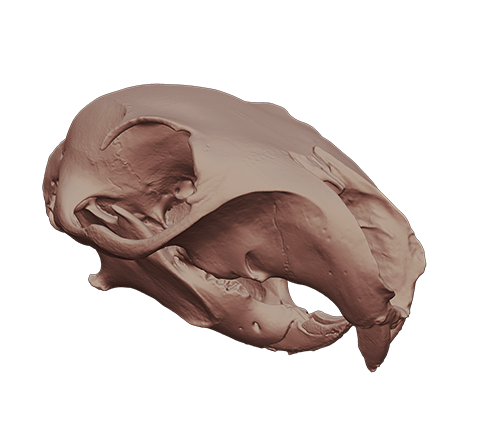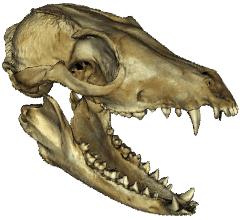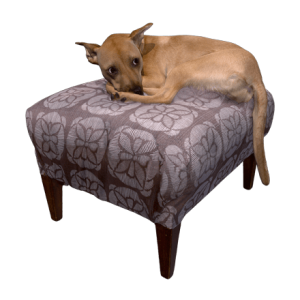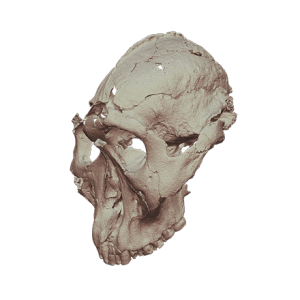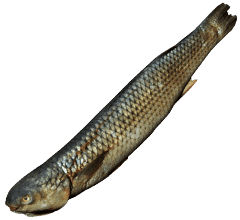Description
This skull of an eastern gray squirrel was captured in just minutes with the Artec Micro, a high-resolution (point accuracy up to 10 microns) desktop 3D scanner that gives you the power of one-click automated scanning of small objects. This diminutive skull’s 55mm length, 26mm height, and 34mm width, together with its ample degree of geometric complexity, made it a fine choice for scanning with Micro. The many organic geometries of the skull were captured in their entirety, including all the thin edges and tiny holes, as well as the deeper structures well within the cranial vault.
With Micro, a virtually unlimited range of small objects can be transformed into stunningly accurate 3D models. Examples include watch gears, dental castings, jewelry, fossils, mechanical components, forensics evidence, etc.
In terms of capturing small anatomical objects, such as for forensics applications, myriad possibilities are open to users of Artec Micro. To take one example, scanning either human dentitions (casts) or individual teeth. Intraoral scanners aren’t always available, especially out in the field or in impoverished countries. Micro gives forensics specialists and law enforcement agencies an automated, one-click solution for capturing either full dental casts or individual teeth in minutes. The scans can then be used for either antemortem or postmortem comparisons, for bite mark analyses, identification of human remains, and more.
Another application in the world of forensics is scanning small bones found at death scenes. Misidentifications of human and animal skeletal remains are a common occurrence among trained law enforcement officers as well as forensic pathologists and archaeologists. For instance, the small bones of the feet in humans and bears are highly similar, even upon careful visual inspection. But a quick Micro scan and comparison, especially with guidelines from a forensic anthropologist, will reveal their many structural differences.

